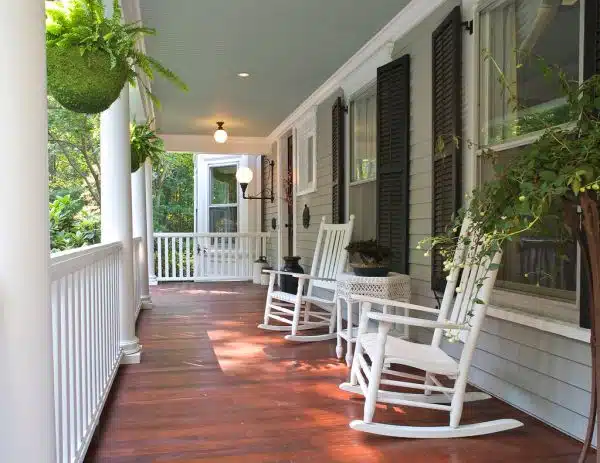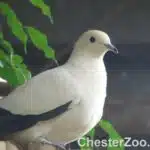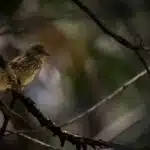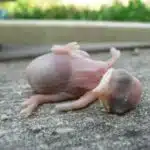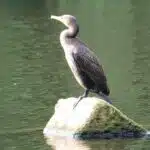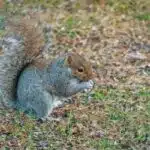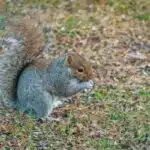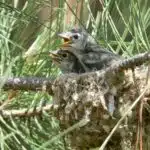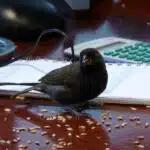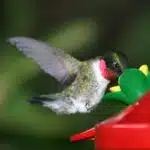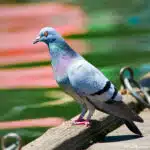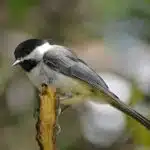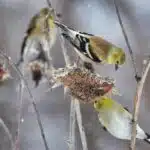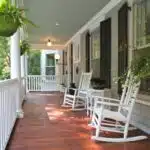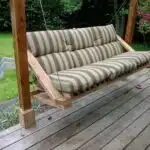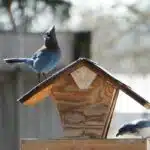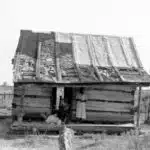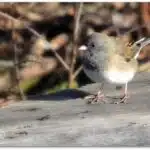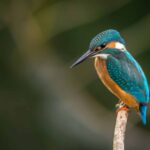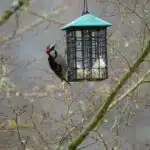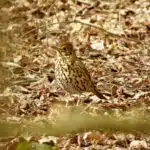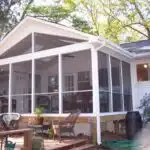As avian control specialists, we understand the importance of a clean and bird-free porch. Birds can cause damage to property, leave behind unsightly droppings, and even pose potential health risks to individuals and pets. Therefore, it is crucial to take preventative measures to keep birds off your porch.
Various methods can be employed in deterring birds from perching or nesting on your porch. This article will explore effective solutions for keeping birds away from your outdoor space while ensuring their safety and well-being. By implementing these strategies, homeowners can enjoy a clean and bird-free environment that enhances the overall appearance of their homes.
Understanding The Dangers Of Bird Infestations
Bird infestations can be a serious problem for those who frequent their porch areas. Understanding bird behavior is key to preventing and controlling infestations. Birds have a natural instinct to find shelter, food, and water sources, making your porch an ideal location for them to nest and roost.
However, bird droppings can cause significant damage to your porch structure as well as pose health risks to you and your family. The accumulation of droppings can create an unsightly mess that requires extensive cleaning efforts. Additionally, bird droppings contain harmful bacteria and fungi that can cause respiratory issues and other health problems if left unaddressed.
It’s important to take proactive measures to prevent bird infestations on your porch by understanding the consequences of their presence. This includes regular cleaning and maintenance of your porch area, installing physical barriers like netting or spikes, and addressing any potential food or water sources that may attract birds. In the following section, we will discuss how to identify common species of birds that may inhabit your porch area.
Identifying Common Porch Bird Species
Porch bird species can be identified based on their physical characteristics and behavior. Common porch bird behaviors include perching, nesting, and feeding on insects or seeds. Each species has unique features that distinguish it from others. Identifying the type of birds frequenting your porch is crucial to implementing effective bird control measures.
Attracting desirable porch bird species is a great way to discourage unwanted birds from colonizing your space. Species like swallows, martins, and bluebirds are known to feed on insects that may cause damage to your property. Providing nesting boxes for these birds can be a useful strategy in attracting them to your porch while also enhancing the aesthetic appeal of your outdoor space.
Identifying common porch bird species is just the first step in keeping them away from your property. Evaluating your porch’s vulnerability to bird infestations involves assessing factors such as food and water sources, nesting sites, and entry points for birds. By understanding the habits of different bird species and taking preventative measures accordingly, you can effectively protect your porch from unwanted winged visitors.
Evaluating Your Porch’s Vulnerability To Bird Infestations
Assessing the accessibility of your porch is the first step in evaluating its vulnerability to bird infestations. Birds are attracted to areas that are easy to access, so it is important to take note of any nearby trees or structures that could provide a clear path for birds to fly onto your porch. Additionally, assessing the level of protection provided by your porch’s roofing and walls can give you a better understanding of how easily birds can enter and nest on your property.
Identifying weaknesses in your porch’s design and maintenance is also critical in preventing bird infestations. Small cracks or openings in walls or roofing can provide entry points for birds, while a lack of regular cleaning can result in accumulations of debris that attract pests. It is also important to be aware of any potential food sources on or near your porch, such as pet food bowls or improperly stored trash.
By assessing the accessibility and identifying weaknesses in your porch’s design and maintenance, you can proactively take steps towards preventing bird infestations. The next step is to remove any attractants for birds, which we will discuss in the subsequent section. Remember, prevention is key when it comes to controlling bird populations on your property.
Removing Attractants For Birds
- Cleaning up is an important step in removing attractants for birds; potential food sources, such as birdseed, should be removed and disposed of properly.
- Covering food sources is a necessary measure to prevent birds from accessing them; this includes covering pet food, bird feeders and other sources of food.
- Blocking access to areas where birds may attracted is essential; this includes covering windows, sealing off areas where birds may nest and putting up mesh guards around balconies.
- Bird-proofing can also be a helpful tool in reducing attractants; this includes removing or replacing any objects or materials which may be attractive to birds.
- Installing exclusion devices, such as wire or netting, can be used to deter birds from entering certain areas; these should be installed on balconies and other areas where birds may be attracted.
- Finally, it is important to remember that removing attractants for birds requires an ongoing effort; regular monitoring and adjustments may need to be made in order to maintain an effective deterrent.
Cleaning Up
As an avian control specialist, I understand the importance of removing attractants for birds from your porch. One effective way to do this is by cleaning up any debris or waste that may be present. This includes items such as food scraps, birdseed, and garbage. By doing so, you can eliminate potential food sources for birds and discourage them from frequenting your porch.
In addition to cleaning up regularly, recycling can also play a key role in reducing waste and attracting fewer birds to your porch. Recycling has many benefits for both the environment and your community. Not only does it reduce landfill waste, but it also conserves natural resources and saves energy. By taking steps to recycle properly and reduce your overall waste output, you can create a less attractive environment for birds.
Another tip for reducing waste on your porch is to be mindful of how you dispose of certain items. For example, if you have a bird feeder on your porch, make sure to clean it regularly and dispose of any old or moldy feed appropriately. Additionally, avoid leaving out pet food or water bowls overnight as they can also attract birds looking for a meal. By taking these small steps towards cleanliness and proper disposal methods, you can create an environment that is less appealing to birds and ultimately keep them off your porch.
Covering Food
As an avian control specialist, it is important to understand the various ways in which birds can be attracted to your porch. One common attractant for birds is food, which can come in the form of scraps left behind or birdseed placed out for feeding. To mitigate this issue, homeowners can take steps to cover their food and reduce the appeal of their porch as a food source.
One effective solution is to use DIY food covers, which are easy to make and can be customized to fit any size or shape of dish. These covers not only protect your food from bird droppings and other debris but also deter birds from landing on your porch altogether. Additionally, there are many natural bird deterrents that can be used in conjunction with these covers, such as planting certain types of shrubs or herbs that repel birds.
By taking these simple steps towards covering your food and using natural deterrents, you can create a less attractive environment for birds on your porch. This will not only help keep your porch clean and free of bird droppings but also protect the health and safety of both yourself and your family members. Remember that small changes in behavior can have a big impact on reducing attractants for birds and keeping them off your property.
Blocking Access
As avian control specialists, it is important to understand the various attractants that birds may have towards your property. One effective way to prevent birds from landing on your porch is by removing any available food sources. However, even if you cover your food and use natural deterrents, birds may still find other reasons to land on your porch. This is where blocking access comes into play.
DIY blocking techniques can be an affordable and effective solution for homeowners looking to keep birds off their property. By installing bird netting or wire mesh around areas where birds may land or nest, you can create a physical barrier that prevents them from accessing your porch altogether. Additionally, there are many other DIY methods such as using reflective tape or wind chimes which can also deter birds from landing.
For those who prefer professional help in blocking access, there are many companies that specialize in bird control services. These professionals have the expertise and equipment needed to install more advanced solutions such as spike strips or electrical barriers. Hiring professionals can also ensure that the work is done safely and effectively without causing harm to the environment or harming the birds themselves.
By using these DIY blocking techniques or hiring professionals for blocking access, homeowners can effectively prevent birds from landing on their porch and causing damage or health hazards. It is important to remember that while removing attractants and blocking access are both important steps towards bird control, they should be used in conjunction with each other for maximum effectiveness.
Installing Bird Netting
Now that we have discussed removing attractants for birds, let us move on to the next step in keeping birds off your porch: installing bird netting. Bird netting is a physical barrier that can prevent birds from landing and roosting on your porch. It is an effective and humane way to keep unwanted birds away from your property.
When it comes to bird netting, there are different types of materials you can use, such as plastic mesh, nylon netting, or stainless steel wire. The type of material you choose will depend on the size of the birds you want to deter and the level of durability required. For smaller birds like sparrows, a plastic mesh may suffice, but for larger birds like pigeons or seagulls, a stronger material like stainless steel wire may be necessary.
In addition to choosing the right type of bird netting, proper installation is also key to its effectiveness. Here are some tips for installing bird netting: Ensure that the netting is flush against all surfaces and corners so that there are no gaps where birds can enter. Use zip ties or clips to secure the edges of the netting tightly in place. Lastly, make sure that there are no loose strands or tears in the netting that could allow birds to penetrate it.
Transitioning into applying bird repellent gel: “While bird netting is an effective way to physically block birds from accessing your porch area, there are additional measures you can take to reinforce this deterrent. One such measure involves applying bird repellent gel.” ‘ Bird repellent gel is a sticky substance that can be applied onto surfaces such as railings, ledges, and beams to create a surface that is uncomfortable for birds to perch on, effectively deterring them from landing and keeping your porch area bird-free.’
Applying Bird Repellent Gel
- When selecting a bird repellent gel, it is important to consider the type of birds that are frequenting the area and the type of surface to which the gel will be applied.
- To effectively apply bird repellent gel, it is essential to ensure that the surface is clean, dry and free of debris.
- An even coating of the gel should be applied to the entire surface, including any cracks and crevices, to ensure maximum efficacy.
- Bird repellent gel is an effective and humane method for keeping birds away from surfaces, such as porches.
- In addition to providing an immediate solution, the gel also has a long-term repellent effect, so periodic application is not required.
- Furthermore, the gel is safe, non-toxic and will not leave a residue on the surface, making it an ideal choice for any avian control specialist.
Choosing Repellent Gel
As an avian control specialist, I understand the importance of choosing the right repellent gel to keep birds off your porch. There are a variety of options available on the market, and it can be overwhelming to decide which one is best for your specific situation. To add depth to this topic, let’s discuss effectiveness comparison and safety concerns when selecting a repellent gel.
Firstly, it is essential to consider the effectiveness of the repellent gel you choose. Some gels are designed specifically for certain bird species, while others have a broader range of effectiveness. It is important to research what type of birds are causing problems in your area and select a gel that targets them specifically. Additionally, look for reviews from other homeowners who have used similar products and see if they had success in keeping birds away.
Secondly, safety should be a top concern when selecting a repellent gel. While these products are designed to deter birds, they should not harm them or any other animals that may come into contact with them. Look for gels that use non-toxic ingredients and follow all instructions carefully when applying. It is also important to consider any potential risks to humans or pets who may come into contact with the product.
In conclusion, choosing the right repellent gel is key in keeping birds off your porch safely and effectively. By considering both effectiveness comparison and safety concerns when selecting a product, you can ensure that you are making the best choice for your home and family. Remember to always follow instructions carefully and monitor the results regularly to make adjustments as needed.
Applying Gel Effectively
As an avian control specialist, I understand the importance of applying bird repellent gel effectively. Choosing the right product is just one part of the equation; proper application is crucial to ensure its effectiveness. Before applying any repellent gel, it is important to understand bird behavior and their habits. Birds tend to roost and nest in areas that are protected from predators and provide easy access to food and water. By identifying these areas, you can strategically apply the gel in a way that will deter birds from landing or nesting.
When choosing bird repellent gel, it is important to follow the manufacturer’s instructions carefully. Improper application can lead to reduced effectiveness or even harm for both birds and other animals. The first step in applying repellent gel effectively is to clean the area thoroughly before application. Any droppings or debris should be removed, as they can interfere with adhesion and reduce effectiveness.
Once the area is clean, apply a thin layer of repellent gel with a caulking gun or other applicator tool. Be sure to cover all surfaces where birds may land or roost, including ledges, pipes, and gutters. It may be necessary to reapply the gel periodically depending on weather conditions and bird activity levels. By following these steps, you can apply bird repellent gel effectively and deter birds from landing or nesting on your property safely.
Benefits Of Gel Repellent
As an avian control specialist, I understand the importance of using bird repellent gel to deter birds from landing or nesting on properties. In addition to proper application techniques, it is essential to consider the advantages and effectiveness of these products. One significant benefit of using gel repellent is that it can be applied in a targeted manner, making it an ideal solution for areas where physical barriers or other methods may not be practical.
Another advantage of using bird repellent gel is that it is a humane solution that poses no harm to birds or other animals. Unlike traditional pest control methods such as poisons or traps, repellent gel simply discourages birds from landing in certain areas without causing any physical harm. Additionally, since the gel does not contain any toxic chemicals, it is safe for use around humans and pets.
Overall, the benefits of using bird repellent gel make it an effective and practical solution for controlling avian pests. By targeting high-risk areas with this product, property owners can effectively deter birds from landing or nesting without causing harm to wildlife or risking harm to humans and pets. With proper application techniques and ongoing maintenance, bird repellent gel can be a valuable tool in any avian control strategy.
Installing Bird Spikes
As an avian control specialist, I highly recommend installing bird spikes as a highly effective method of keeping birds off your porch. These spikes are designed to deter birds from landing and roosting on surfaces such as ledges, roofs, and window sills. They are made of durable materials like stainless steel or plastic that can withstand harsh weather conditions.
One of the great benefits of bird spikes is that they are humane. Unlike other methods of bird control which may harm or kill birds, these spikes simply prevent them from landing on certain surfaces. Additionally, they are environmentally friendly and do not use any chemicals or harmful substances. Bird spikes are also easy to install and can be customized to fit any surface area.
When it comes to buying bird spikes, it’s important to choose high-quality products from reputable sellers. The best places to buy bird spikes are online retailers such as Amazon or Home Depot. These retailers offer a wide range of brands and sizes to choose from, ensuring you find the perfect product for your needs. Always check for customer reviews before making a purchase so you can be confident in your selection.
Transition: While bird spikes are highly effective at deterring birds, there are other methods that can be used in conjunction with them for maximum effectiveness. One such method involves using fake predators to deter birds without causing harm.
Using Fake Predators To Deter Birds
Fake predators, such as plastic owls, rubber snakes, and plastic hawks, are a popular method used to deter birds from porches and other areas. Different types of fake predators may be more effective against certain species of birds, and it is important to consider this before selecting one. To maximize the effectiveness of a fake predator, proper placement is key; they should be positioned to appear as if they are in a hunting or aggressive stance. Finally, fake predators should be moved around periodically to mimic natural predatory behavior.
Types Of Fake Predators
As an avian control specialist, I know that using fake predators is an effective way to deter birds from landing on your porch. There are several types of fake predators that you can use, each with their own pros and cons.
The first type of fake predator is the owl decoy. Owls are natural predators of many bird species, so placing an owl decoy on your porch can be quite effective in keeping birds away. However, the effectiveness of this method may diminish over time as birds become accustomed to the decoy. Additionally, owl decoys can be relatively expensive.
Another type of fake predator is the scarecrow or falcon kite. These options mimic the shape and movement of real birds of prey, making them a great option for scaring off smaller bird species such as sparrows and finches. The downside to these options is that they can be affected by weather conditions such as wind or rain, which may limit their effectiveness.
Lastly, there are snake deterrents which can be placed around your porch area to keep birds at bay. These work by mimicking a snake’s movements and scent which naturally frightens birds. A major pro to this method is that it doesn’t require any maintenance once installed and is relatively inexpensive compared to other options. However, like all methods, its effectiveness may depend on the specific bird species you’re dealing with.
In conclusion, when considering which type of fake predator to use for keeping birds off your porch it’s important to weigh both the pros and cons as well as cost-effectiveness and overall effectiveness for the specific bird species you’re trying to deter.
Placement Of Fake Predators
The placement of fake predators is a crucial factor in their effectiveness. As an avian control specialist, I’ve seen many cases where the wrong placement of a fake predator has rendered it ineffective. It’s important to place the fake predator in an area where it will be visible to birds and in a location that mimics the natural environment of the predator.
When choosing the right fake predator for your porch, it’s important to consider the specific bird species that you’re dealing with. Different bird species have different behaviors and preferences when it comes to predators. For example, some birds are more likely to be deterred by an owl decoy while others may be more effectively scared off by a falcon kite or snake deterrent. Understanding which bird species you’re dealing with will help you choose the best fake predator for your situation.
In addition to considering bird behavior and preferences, it’s also important to rotate fake predators regularly and move them around your porch area. Birds can quickly become accustomed to a static decoy, rendering it ineffective over time. By regularly moving and rotating decoys, you can increase their effectiveness and continue deterring birds from landing on your porch.
Installing Ultrasonic Bird Repellers
Ultrasonic bird repellers: effective solution or waste of money? This is a common question among homeowners who are looking for a way to keep birds off their porch. Ultrasonic bird repellers emit high-frequency sounds that are designed to deter birds from roosting on your property. While some people swear by these devices, others claim that they are a waste of money.
If you’re considering installing ultrasonic bird repellers on your porch, there are a few things you should know. First, it’s important to choose the right type of device for your specific situation. Some ultrasonic bird repellers are designed for outdoor use, while others are better suited for indoor spaces. Additionally, you’ll want to consider the size and layout of your porch, as well as the types of birds that you’re trying to repel.
Once you’ve selected the appropriate ultrasonic bird repeller for your porch, it’s time to install it. Start by reading the manufacturer’s instructions carefully and following them closely. In general, most ultrasonic bird repellers can be mounted using screws or adhesive strips. Be sure to place the device in an area where it will have maximum coverage and be visible to birds. You may also want to consider installing multiple devices if your porch is particularly large or has several areas where birds tend to congregate.
Transition: While ultrasonic bird repellers can be an effective way to keep birds off your porch, they’re not the only solution. In the next section, we’ll discuss providing alternative nesting options for birds that can help discourage them from roosting on your property altogether.
Providing Alternative Nesting Options For Birds
While ultrasonic bird repellers are effective in keeping birds off your porch, it is not the only solution that a homeowner can implement. Building birdhouses and providing alternative nesting options for birds are other ways to deter them from nesting on or near your porch.
Building birdhouses is an excellent way to provide an attractive alternative to a porch as a nesting spot. By building houses with specific dimensions, you can attract different species of birds. For example, bluebirds need a house with an opening of 1.5 inches in diameter, whereas chickadees prefer a house with an opening of 1-1/8 inches in diameter.
Attracting different species of birds is also beneficial because they can help control pests such as mosquitoes and flies. Educating neighbors on the benefits of attracting birds to their yard can also have a positive impact on the community’s ecosystem. In the next section, we will discuss how educating neighbors on bird control can make a difference in preserving the environment while reducing noise pollution and cleaning up after them.
Educating Neighbors On Bird Control
Neighbor education is an essential aspect of bird control. It is crucial to educate neighbors about the impact of birds on the community and how they can deter them from hanging around their properties. Effective deterrents include bird spikes, netting, and repellents that prevent birds from landing or roosting on your porch.
Understanding bird behavior is also essential in preventing their presence in your area. Birds are attracted to food sources such as pet food, garbage cans, and outdoor dining areas. As such, it is essential to keep these areas clean and free of any leftovers or scraps that may attract birds. Additionally, trimming trees and bushes around your property can help reduce nesting opportunities for birds.
Community outreach programs can also be effective in educating neighbors about bird control measures. Local authorities can organize seminars where experts talk about bird behavior and provide information on effective deterrence methods. By working together as a community, residents can create a safe and conducive environment for everyone.
It is vital to note that seeking professional assistance for bird removal may be necessary if all other measures fail. Professional avian control specialists have the knowledge and expertise required to remove birds safely without harming them or damaging your property. They can also provide long-term solutions that prevent future infestations. With their help, you can enjoy a bird-free porch all year round.
Seeking Professional Assistance For Bird Removal
Avian control specialists are trained to provide a range of services from exclusion and removal of birds from buildings to providing deterrents such as netting, spikes and bird proofing. Professional services usually vary in cost depending on the size of the property and the extent of the bird problem. Engaging a professional to solve an avian control problem can be advantageous as they are experienced in dealing with birds, have access to specialised equipment, and offer long-term and effective solutions. Professional services may also include the provision of advice and information on bird behaviour, health and safety considerations, and any relevant legal requirements. In addition, they can provide the necessary clean-up and decontamination services after successful bird removal. Finally, professional avian control specialists can provide ongoing monitoring and maintenance services to ensure that birds do not return.
Types Of Professional Services
As an avian control specialist, I understand the frustration that comes with having birds invade your personal space. Birds can be a nuisance on your porch, leaving behind droppings and making noise that can disturb your peace. DIY methods may work for a short period, but they are not effective in the long run. To ensure that birds are kept off your porch, it is best to seek professional assistance.
When seeking professional assistance for bird removal, there are various types of services available to choose from. One option is humane bird control, which involves using non-lethal methods to repel birds from your porch without harming them. Another option is physical deterrents, such as spikes or netting, which prevent birds from landing on your porch altogether. The cost of these services may vary depending on the severity of the bird infestation and the type of service chosen.
It is essential to note that seeking professional assistance for bird removal is an investment in both your property and well-being. While DIY methods may seem cost-effective at first glance, they do not provide a long-term solution to keep birds off your porch. By investing in professional services tailored to meet your needs, you will achieve peace of mind knowing that you have taken the necessary steps towards keeping unwanted birds away from your home.
Cost Of Professional Services
When it comes to seeking professional assistance for bird removal, one of the most crucial factors to consider is the cost of services. While affordability options are available, it is essential to remember that investing in professional services tailored to your needs is an investment in both your property and well-being. DIY alternatives may seem like a more cost-effective solution, but they often do not provide long-term results.
The cost of professional bird removal services varies depending on several factors, such as the severity of the infestation and the type of service required. Humane bird control methods using non-lethal methods tend to be more affordable than physical deterrents such as spikes or netting. However, it is recommended to consult with a specialist who can provide a detailed estimate based on your particular situation.
In conclusion, while seeking professional assistance for bird removal may come at a cost, it is worth considering the long-term benefits. Investing in affordable options and tailored services will help ensure that your porch remains free from birds without harming them. It is always best to consult with a specialist who can provide you with all the information necessary to make an informed decision about which service best suits your needs.
Advantages Of Professional Services
As an avian control specialist, it is my duty to help property owners deal with bird infestations. One of the most common questions I receive from clients is whether professional services are worth the cost. My answer is always a resounding yes, and in this discussion, we will explore some of the advantages of seeking professional assistance for bird removal.
Firstly, professional services offer a more comprehensive solution to bird infestations compared to DIY alternatives. While homemade remedies may provide temporary relief, they often fail to address the root cause of the problem. Professional services utilize specialized equipment and techniques that effectively eliminate birds and discourage them from returning. This approach ensures that your property remains free from birds for an extended period.
Secondly, professional services also provide long-term cost benefits. While it may seem like DIY alternatives are cheaper upfront, they often require frequent reapplication or replacement due to their limited effectiveness. On the other hand, professional services tailored to your needs offer a one-time solution that saves you money in the long run. Additionally, investing in professional services protects your property from costly damages caused by bird droppings and nesting materials.
In conclusion, seeking professional assistance for bird removal offers several benefits over DIY alternatives. These include a more comprehensive solution to infestations and long-term cost savings resulting from effective elimination and prevention measures. As a property owner looking to protect your investment and well-being, engaging a specialist is undoubtedly worth considering as an investment in both yourself and those around you.
Maintaining A Clean Porch Environment
To maintain a clean porch environment, it is essential to understand the importance of regular cleaning. As an avian control specialist, I highly recommend incorporating green cleaning methods into your routine. Not only are these methods environmentally friendly, but they also have numerous benefits for your health and well-being.
By using natural cleaners such as vinegar and baking soda, you can effectively remove dirt, grime, and bird droppings from your porch without harming the environment or risking your health. Additionally, green cleaning products are often more affordable than their chemical-based counterparts. Regularly cleaning your porch will not only improve its appearance but also prevent pest infestations.
Preventing pest infestations is crucial when it comes to maintaining a clean and safe porch environment. Birds are not the only creatures that may be attracted to food scraps or standing water on your porch; rodents and insects can also be problematic. By keeping your porch clean and free of debris, you can significantly reduce the likelihood of pest infestations. Incorporating bird deterrents such as nets or spikes can also help keep unwanted guests away from your porch area.
With regular maintenance and attention to detail, you can ensure that your porch is a beautiful and safe space for all to enjoy. In the next section, we will discuss how monitoring your porch for bird activity can help you identify potential problem areas before they become major issues in need of professional intervention.
Monitoring Your Porch For Bird Activity
As an avian control specialist, it is essential to monitor your porch for bird activity regularly. Setting up cameras around your porch can be a great way to track bird behavior and identify what birds are causing issues. By monitoring the frequency and timing of bird visits, you can gain insight into what may be attracting them to your porch.
Tracking bird behavior can also help you determine the best course of action to take in deterring them from landing or nesting on your porch. For example, if you notice that birds are primarily landing on your porch during certain times of day, it may indicate that they are using it as a resting spot while migrating. In this case, simply removing any food sources and providing alternative resting spots nearby may be enough to discourage them from using your porch.
Overall, monitoring bird activity is an essential step in keeping birds off your porch. By setting up cameras and tracking their behavior patterns, you can identify what types of birds are causing issues and make informed decisions about how to deter them effectively.
Transition: With proper monitoring techniques in place, the next step is taking action towards celebrating a bird-free porch.
Celebrating A Bird-Free Porch
Once you’ve successfully kept birds off your porch, it’s time to celebrate! A bird-free porch means you can enjoy the space without worrying about cleaning up after feathered visitors or dealing with their droppings. Plus, it opens up endless possibilities for decorating and furnishing your outdoor area.
When it comes to decorating tips for a bird-free porch, the sky’s the limit! Consider adding potted plants, string lights, or decorative pillows to create an inviting atmosphere. If you have a larger space, consider adding a rug or outdoor curtains to make the area feel more cozy and intimate. Just be sure to choose items that are easy to clean and won’t attract birds back to your porch.
As for porch furniture, there are many options available that are both stylish and functional. Outdoor dining sets can provide a great place for entertaining friends and family, while lounge chairs or hammocks offer a relaxing spot for reading or napping. Whatever furniture you choose, be sure to keep it clean and free of any food crumbs or debris that could attract unwanted avian visitors back to your porch.
Conclusion
Bird infestations on porches can pose serious health and safety risks, including property damage and the spread of diseases. As an avian control specialist, it is important to understand the common bird species that may invade your porch, such as pigeons and sparrows. Evaluating your porch’s vulnerabilities and removing attractants are crucial steps in preventing bird infestations.
Installing bird netting and seeking professional assistance for removal can also be effective strategies. Maintaining a clean porch environment and monitoring for bird activity are important for long-term prevention. By following these steps, you can celebrate a bird-free porch that is safe and enjoyable for all. Remember, prevention is key in avoiding potential hazards caused by bird infestations.
Image Credits
- “Porch” by sonjalovas (featured)

